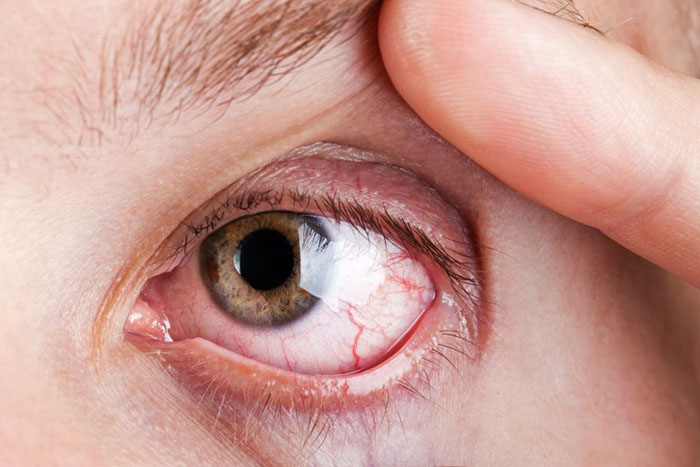
Diabetic retinopathy is a serious eye condition that affects people with diabetes and can lead to vision loss if not detected early and managed properly. This disease impacts the blood vessels in the retina, causing damage that worsens over time.
Recognizing the signs that diabetic retinopathy is progressing is crucial for timely treatment and preventing irreversible damage to vision. This article explores the key symptoms and indicators that signal the advancement of diabetic retinopathy and what steps should be taken.
Understanding Diabetic Retinopathy
Diabetic retinopathy develops when high blood sugar levels cause damage to the tiny blood vessels in the retina, the light-sensitive tissue at the back of the eye responsible for vision. In the early stages, diabetic retinopathy may be mild and asymptomatic, meaning patients often do not notice any changes in their vision.
However, as the disease progresses, these damaged blood vessels can leak fluid or hemorrhage, leading to swelling and scarring that impair vision. Without intervention, diabetic retinopathy can advance to severe stages and cause blindness.
Early Signs vs. Signs of Progression
It’s important to differentiate between the early signs of diabetic retinopathy and the signs that indicate the condition is progressing. Early diabetic retinopathy may cause subtle changes such as:
- Slight blurring of vision
- Occasional floaters or spots in vision
These symptoms can be easily overlooked, which is why regular eye exams are essential for people with diabetes. Signs that diabetic retinopathy is progressing, however, are often more noticeable and severe, signaling that the retina is undergoing further damage.
Warning Signs That Diabetic Retinopathy Is Progressing
Increased Floaters and Spots
One of the most common signs that diabetic retinopathy is advancing is the sudden increase in floaters—small dark shapes or spots drifting across your field of vision. These floaters are caused by bleeding from damaged retinal blood vessels into the vitreous, the gel-like substance inside the eye. A mild presence of floaters can occur early, but a sudden surge often points to worsening disease and possible hemorrhage.
Blurred or Distorted Vision
As diabetic retinopathy progresses, swelling in the retina, particularly in the macula (the central part of the retina), can lead to blurred or distorted vision. This condition is known as diabetic macular edema (DME).
Patients might notice that straight lines appear wavy or that it becomes difficult to read or recognize faces. Blurred vision that does not improve with blinking or glasses should be taken seriously.
Difficulty Seeing in Low Light
Difficulty adjusting to dim lighting or trouble seeing at night can be another sign that diabetic retinopathy is advancing. The damage to the retinal blood vessels impairs the retina’s ability to function well under varying light conditions. People may find it harder to drive at night or notice that their vision quality decreases significantly in low-light environments.
Loss of Vision or Dark Areas in Vision
In advanced stages, diabetic retinopathy can cause partial or complete loss of vision in certain areas of the visual field. This happens due to the growth of abnormal blood vessels that bleed or scar the retina, creating blind spots.
If you experience sudden dark patches, shadows, or a significant loss of peripheral or central vision, it is a red flag indicating that diabetic retinopathy has progressed and requires urgent attention.
Why Progression Happens
The progression of diabetic retinopathy is often linked to poor control of blood sugar levels, high blood pressure, and cholesterol. Over time, these factors contribute to increased damage to the fragile retinal vessels. Additionally, the longer a person has diabetes, the greater the risk of diabetic retinopathy progressing. Other risk factors include smoking, pregnancy, and kidney disease.
Monitoring and Diagnosing Progression
Regular eye examinations are critical for monitoring diabetic retinopathy. Eye specialists use tools such as fundus photography and optical coherence tomography (OCT) to detect changes in the retina before symptoms become severe. If you have diabetes, you should have a comprehensive dilated eye exam at least once a year, or more frequently if diabetic retinopathy is detected.
Treatment Options for Progressive Diabetic Retinopathy
If signs show that diabetic retinopathy is progressing, timely treatment can help slow or stop vision loss. Treatment options include:
- Laser Therapy: To seal leaking blood vessels and reduce swelling
- Anti-VEGF Injections: Medications injected into the eye to reduce abnormal blood vessel growth and fluid leakage
- Vitrectomy Surgery: Removal of vitreous gel to clear blood and scar tissue if there is severe bleeding
These treatments are more effective when administered early in the progression of diabetic retinopathy.
Taking Action: Managing Diabetes to Protect Your Vision
While medical treatments are essential, managing your diabetes is the best way to slow the progression of diabetic retinopathy. This includes:
- Keeping blood sugar levels within target ranges
- Controlling blood pressure and cholesterol
- Avoiding smoking
- Maintaining a healthy lifestyle with balanced diet and exercise
By addressing these factors, you can reduce the risk of diabetic retinopathy worsening.
Conclusion
Recognizing the signs that diabetic retinopathy is progressing is vital for preserving vision and preventing permanent damage. Increased floaters, blurred vision, difficulty in low light, and vision loss are key symptoms that should prompt immediate consultation with an eye specialist.
If you have diabetes, regular eye exams and strict diabetes management are your best defense against the progression of diabetic retinopathy. Early detection and timely treatment can help maintain your vision and quality of life for years to come.






